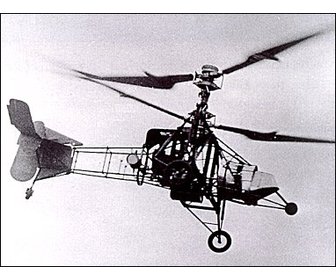Gyroplane Laboratoire

The Gyroplane Laboratoire is considered by some to be the first practical helicopter in the world. Its designer Frenchman Louis Breguet had already experimented with rotorcraft in 1909 however he chose to concentrate on airplanes until the end of the 1920s.
Gyroplane Laboratoire », réussit son premier vol en 1935.1
In 1935 Louis Breguet flew the Gyroplane Laboratoire, a twin coaxial
rotor helicopter (like a Kamov). It had a tailplane. Its blades had
cyclic pitch and collective pitch blade control.2
The Bréguet-Dorand Gyroplane Laboratoire was built in 1933. After many
ground tests and an accident, it first took flight on 26 June 1935.3
Made by Breguet-Dorand.
Height Main
2.79 m
Designer
Louis Charles Breguet
Length Alt
ft in
Max Takeoff Weight Main
1950.0
Jet Or Prop
prop
Lists
* List of helicopter models
Range Main
44.0
Loaded Weight Main
kg
Height Alt
ft in
Max Speed Main
120.0
Status
Max Takeoff Weight Alt
lb
Ceiling Main
158 m
Number Built
1
Crew
1
Span Main
15.89 m
Area Main
m²
Span Alt
ft in
Plane Or Copter?
Power Alt
300 hp
Engine(prop)
Hispano-Suiza 8F (HS-8F)
Manufacturer
Useful Load Main
kg
First Flight
26
Loaded Weight Alt
lb
Power Main
225.0
Number Of Props
1
Empty Weight Alt
lb
Length Main
8.92 m
Area Alt
ft²
Range Alt
nm
mi
Empty Weight Main
1430.0
Useful Load Alt
kg
Category
